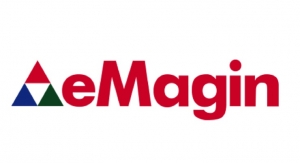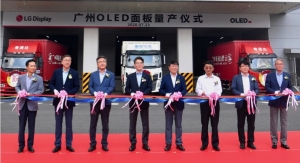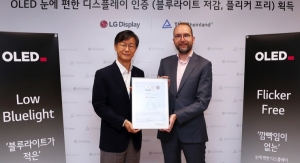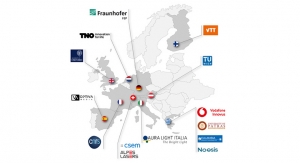09.04.19
LG Display announced the opening of its 8.5th generation (2,200mm x 2,500mm) OLED panel production plant in Guangzhou, China, ushering in an era of producing 10 million large-size OLED panels a year.
LG Display’s new Guangzhou OLED panel plant started mass-production this month and will mainly manufacture large-size high-resolution OLED products including 55-inch, 65-inch and 77-inch panels. The initial monthly capacity will be 60,000 sheets, which will be further expanded to 90,000 sheets by 2021.
The company expects to produce more than 10 million OLED panels a year by 2022 when this monthly capacity of 90,000 sheets is combined with the 70,000 sheets currently manufactured at its OLED panel plant in Paju, Korea, as well as an additional 45,000 sheets to be produced at its 10.5th generation (2,940mm x 3,370mm) plant in Paju from 2022.
The new 8.5th generation OLED panel plant is operated by LG Display High-Tech China (LG Display High-Tech China Co., Ltd, LGDCO), a joint venture established between LG Display and Guangzhou Development District (GDD). LG Display holds a 70% stake with KRW 2.6 trillion in capital.
“Based on our vast experience and capability in OLED production, LG Display will make every effort to ensure the success of LG Display High-Tech China,” said Dr. Sang Beom Han, CEO and vice chairman of LG Display. “With our dual OLED panel production sites in Korea and China, the company will further accelerate the OLED trend in the global pre-mium TV market by providing large-size OLED panels to the world.”
The new 8.5th generation OLED panel plant is built on 74,000 square meters of land – the equivalent of around 10 football fields. With nine levels above ground, the total floor area amounts to 427,000 square meters.
As many companies are not able to mass-produce large-size OLED panels due to technical limitations, LG Display plans to further widen the gap with its competitors and strengthen its leading position starting from the operation of its Guangzhou OLED plant. Given that LG Display’s customers, including LG Electronics, Sony, Philips, Hisense, Skyworth, Chang-hong, and Konka, operate TV production plants in China, the company will further boost its competitiveness by providing technology and products in a timely manner.
Global sales of OLED TV in 2020 are expected to reach 5.5 million units and further in-crease to 7.1 million units in 2021 and 10 million units in 2022, according to global mar-ket research firm IHS Markit. The sharp increase in OLED TV demand is driven by a grow-ing number of global TV brands manufacturing OLED TVs. The total number of those brands is now 15 worldwide and will reach 16 in 2020 when the largest TV maker in the US, Vizio, joins the trend.
Accordingly, LG Display’s large-size OLED panel sales are on a significant and constant rise. The company saw an increase in OLED TV panel sales to 2.9 million units in 2018 and yet another increase to 3.8 million units is anticipated in 2019. LG Display expects its large-size OLED panel business to turn to profitability on an annual basis for the first time this year due to these increasing sales.
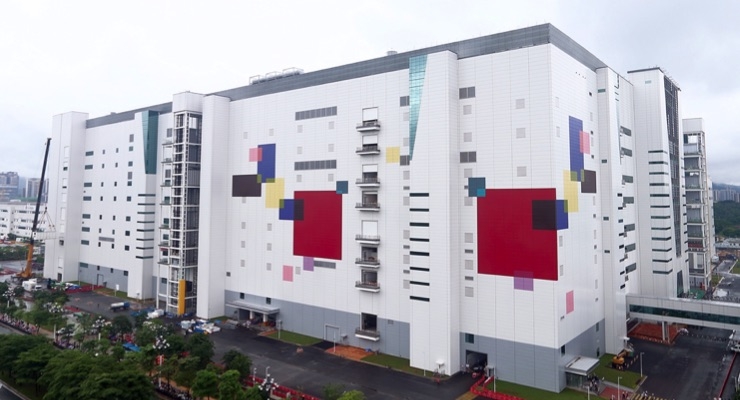
LG Display’s 8.5th generation OLED panel plant in Guangzhou. (Source: LG Display)
LG Display’s new Guangzhou OLED panel plant started mass-production this month and will mainly manufacture large-size high-resolution OLED products including 55-inch, 65-inch and 77-inch panels. The initial monthly capacity will be 60,000 sheets, which will be further expanded to 90,000 sheets by 2021.
The company expects to produce more than 10 million OLED panels a year by 2022 when this monthly capacity of 90,000 sheets is combined with the 70,000 sheets currently manufactured at its OLED panel plant in Paju, Korea, as well as an additional 45,000 sheets to be produced at its 10.5th generation (2,940mm x 3,370mm) plant in Paju from 2022.
The new 8.5th generation OLED panel plant is operated by LG Display High-Tech China (LG Display High-Tech China Co., Ltd, LGDCO), a joint venture established between LG Display and Guangzhou Development District (GDD). LG Display holds a 70% stake with KRW 2.6 trillion in capital.
“Based on our vast experience and capability in OLED production, LG Display will make every effort to ensure the success of LG Display High-Tech China,” said Dr. Sang Beom Han, CEO and vice chairman of LG Display. “With our dual OLED panel production sites in Korea and China, the company will further accelerate the OLED trend in the global pre-mium TV market by providing large-size OLED panels to the world.”
The new 8.5th generation OLED panel plant is built on 74,000 square meters of land – the equivalent of around 10 football fields. With nine levels above ground, the total floor area amounts to 427,000 square meters.
As many companies are not able to mass-produce large-size OLED panels due to technical limitations, LG Display plans to further widen the gap with its competitors and strengthen its leading position starting from the operation of its Guangzhou OLED plant. Given that LG Display’s customers, including LG Electronics, Sony, Philips, Hisense, Skyworth, Chang-hong, and Konka, operate TV production plants in China, the company will further boost its competitiveness by providing technology and products in a timely manner.
Global sales of OLED TV in 2020 are expected to reach 5.5 million units and further in-crease to 7.1 million units in 2021 and 10 million units in 2022, according to global mar-ket research firm IHS Markit. The sharp increase in OLED TV demand is driven by a grow-ing number of global TV brands manufacturing OLED TVs. The total number of those brands is now 15 worldwide and will reach 16 in 2020 when the largest TV maker in the US, Vizio, joins the trend.
Accordingly, LG Display’s large-size OLED panel sales are on a significant and constant rise. The company saw an increase in OLED TV panel sales to 2.9 million units in 2018 and yet another increase to 3.8 million units is anticipated in 2019. LG Display expects its large-size OLED panel business to turn to profitability on an annual basis for the first time this year due to these increasing sales.

LG Display’s 8.5th generation OLED panel plant in Guangzhou. (Source: LG Display)

